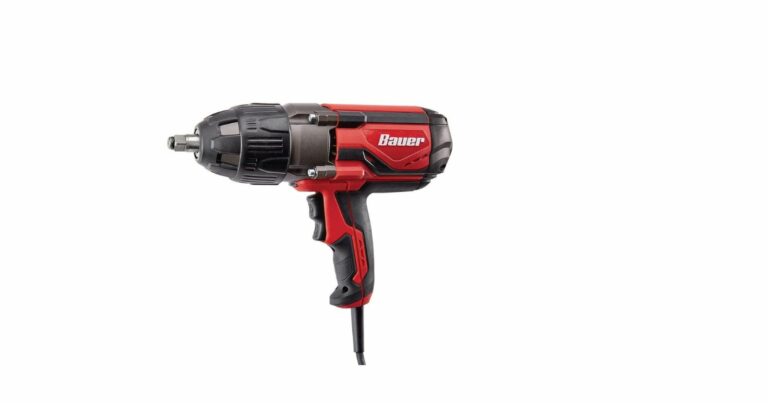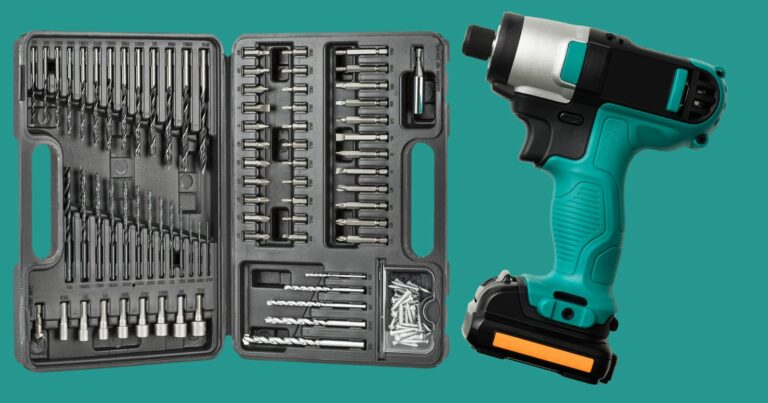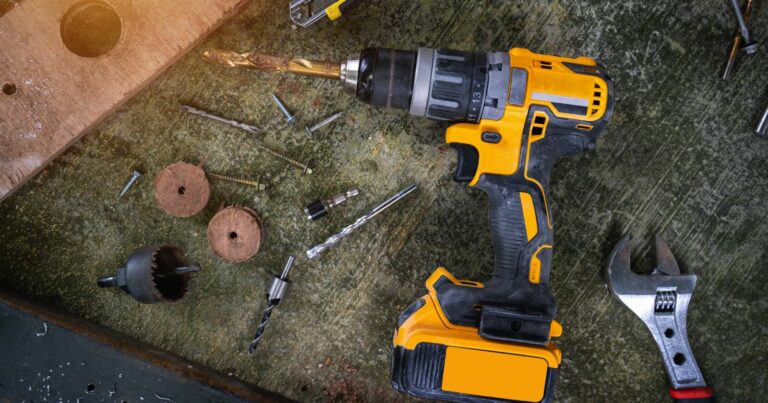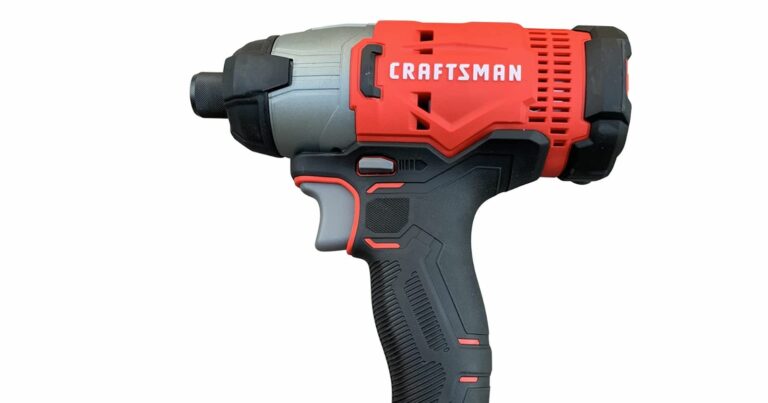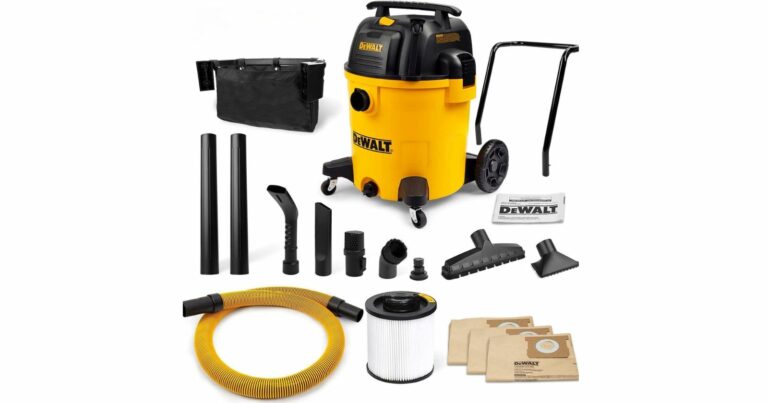How To Cut Concrete With Angle Grinder: A Comprehensive Guide
Can You Cut Concrete With Angle Grinder
Maintain a firm grip on the grinder with both hands and allow the blade to achieve maximum speed while preparing for the incremental increase in force. Then, gently exert pressure to guide the blade through the concrete. Avoid pushing the blade too forcefully into the cut. Instead, perform a sequence of progressively deeper cuts to prevent the blade from overheating.
Diving into a construction or renovation project often feels like embarking on a new adventure. Each step, from planning to execution, comes with its own set of challenges. One of the most pivotal tasks in these projects is cutting concrete. If you’ve ever wondered about How To Cut Concrete With Angle Grinder: A Comprehensive Guide, you’re not alone. It’s not just about making a cut; it’s about precision, efficiency, and ensuring the structural integrity of the material. Over the years, I’ve experimented with a myriad of tools, searching for that perfect blend of ease and effectiveness. And time and again, I’ve found myself returning to one trusty companion: the angle grinder.
So, if you’re stepping into the world of construction or looking to elevate your renovation game, let me share a piece of advice: invest in a good angle grinder. And if you’re on the hunt for a Comprehensive Guide on How To Cut Concrete With An Angle Grinder, know that mastering this tool is an investment in quality, efficiency, and peace of mind.

Why Use an Angle Grinder for Cutting Concrete?
Whenever I’m faced with a concrete cutting task, the first tool that pops into my mind is the angle grinder. You might wonder, “Why an angle grinder of all tools?” Well, let me share my personal experiences and insights on this.
First and foremost, the efficiency and precision of angle grinders are unparalleled. I remember the first time I used one; I was genuinely amazed at how swiftly it sliced through the concrete, leaving a clean and precise cut. Unlike other tools that can leave jagged edges or take ages to make a single cut, the angle grinder made the job seem effortless. Its powerful motor combined with the right blade ensures that I get the desired results every single time.
But it’s not just about the clean cuts. What truly makes me lean towards the angle grinder is its incredible versatility. Over the years, I’ve worked on various projects, from renovating old homes to creating garden pathways. Each project had different concrete structures, from thick slabs to intricate blocks. And guess what? My trusty angle grinder was up for every challenge. Whether I needed to shape a concrete block to fit a specific space or cut through a thick slab, the angle grinder proved to be the perfect companion.
If you’re like me and are looking for a tool that offers both precision and versatility when cutting concrete, look no further than the angle grinder. It’s a game-changer, and I can’t recommend it enough!
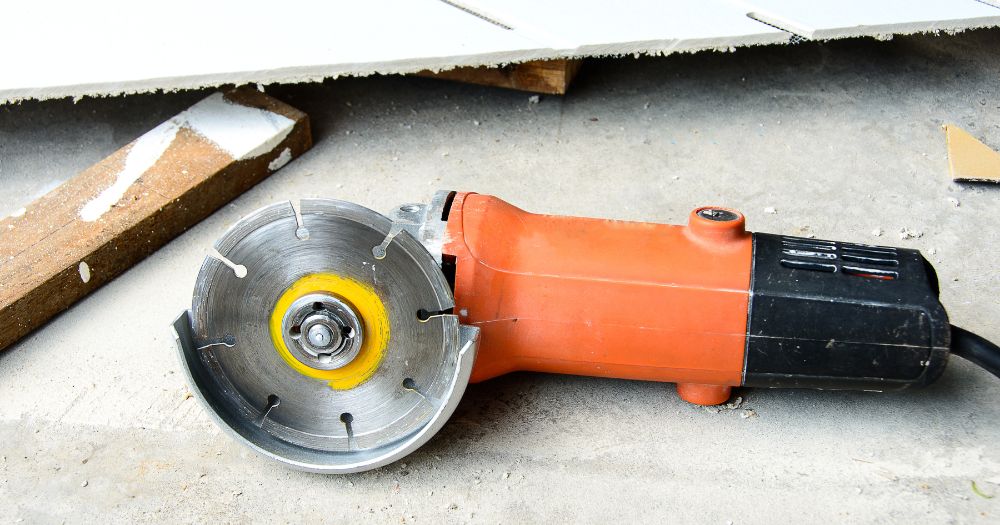
Suggested Reading: Best Portable Dust Collector System Under $500
Preparing to Cut Concrete with an Angle Grinder
Before diving into any project, preparation is key. And when it comes to cutting concrete with an angle grinder, I’ve learned that a little preparation goes a long way in ensuring a smooth and safe process. Here’s how I gear up for the task:
Safety First
Whenever I’m about to power up my angle grinder, the first thing on my mind is safety. Over the years, I’ve realized that no matter how experienced you are, accidents can happen if you’re not cautious. That’s why I never compromise on my safety gear.
Firstly, I always wear sturdy gloves. They not only protect my hands from potential cuts and abrasions but also provide a better grip on the grinder. Next, safety glasses are a must. Trust me, the last thing you want is a stray concrete chip hitting your eye. And considering the amount of dust and debris that cutting concrete can produce, I never forget to wear a face mask. It’s essential to protect your lungs from inhaling harmful particles.
Choosing the Right Grinder Size
Once I’m all geared up, the next step is selecting the right angle grinder for the job. Over time, I’ve accumulated a collection of grinders of various sizes, and each has its unique advantages.
For those intricate jobs or tight spaces, I usually reach for my 4.5-inch grinder. It’s compact, easy to handle, and perfect for detailed work. However, it’s essential to remember that while it might be the standard size, its cutting depth is limited.
On the other hand, when I’m dealing with thicker slabs or need a deeper cut, the 7-inch or 9-inch grinders come into play. They offer more power and a greater cutting depth, making them ideal for heavy-duty tasks.
In essence, understanding the requirements of your project and choosing the right grinder size can make all the difference. It ensures efficiency, precision, and most importantly, safety.
To all my fellow DIY enthusiasts and professionals out there, always remember: preparation is the foundation of success. Equip yourself right, prioritize safety, and you’re all set for a successful concrete cutting session!
Suggested Reading: The 5 Best Slow Speed Bench Grinders for Sharpening: A Beginner’s Guide for 2024
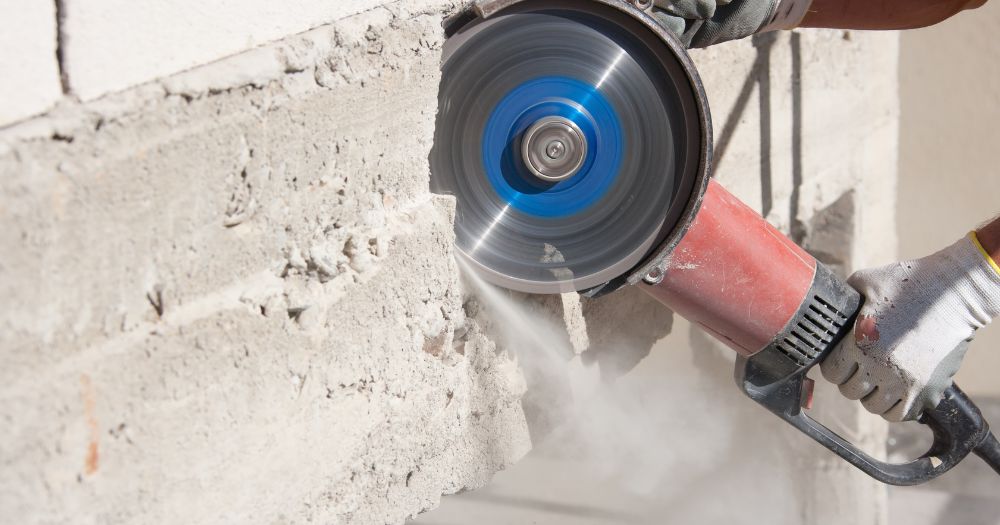
Techniques for Cutting Concrete with an Angle Grinder
Cutting concrete might seem daunting at first, but with the right techniques and a bit of practice, it becomes an art. Over the years, I’ve honed my skills and picked up a few tricks that have made the process smoother and more efficient. Let me share some of these techniques with you.
Selecting the Right Blade
One of the first lessons I learned was the importance of choosing the right blade. Not all blades are created equal, and using the wrong one can lead to inefficient cuts and even damage your grinder. My go-to choice? The diamond saw blade. It’s incredibly durable and slices through concrete like butter.
Now, within the realm of diamond blades, there are two main types I’ve worked with: segmented and continuous blades. Segmented blades have gaps in them, which allow for better airflow and help dissipate heat. They’re great for rough cuts. On the other hand, continuous blades, as the name suggests, have a continuous edge. They’re perfect when I’m looking for a smoother finish.
Cutting Concrete Blocks and Slabs
When it comes to cutting blocks and slabs, precision is key. I always start by marking the area I intend to cut. This ensures I stay on track and achieve a clean cut. Once marked, I clamp down the block or slab to prevent any unwanted movement. With everything set, I gently guide my angle grinder along the marked line, letting the blade do the work. Remember, it’s not about force; it’s about consistency and precision.
Dealing with Reinforced Concrete
Ah, reinforced concrete! It’s a beast of its own. The added rebar makes the concrete incredibly strong, but it also presents a unique challenge when cutting. The key here is to be patient and use a fresh diamond blade. The steel in the rebar can wear down the blade’s edge faster than regular concrete, so it’s essential to keep an eye on it. And always, always measure and mark before you cut to avoid any hidden surprises like conduits or utilities.
Wet vs. Dry Cutting
This is a debate I’ve encountered many times. Both methods have their merits. Wet cutting, where water is used to cool the blade and reduce dust, allows for more precise cuts and is easier on the blade. However, it can be a bit messy. Dry cutting, on the other hand, is quicker and cleaner in terms of water usage, but you’ll have to deal with dust. Personally, I weigh the pros and cons based on the project and location. Indoors? I lean towards wet cutting. Outdoors or in well-ventilated areas, dry cutting often does the trick.
In conclusion, mastering the art of cutting concrete with an angle grinder is all about understanding the material, the tool, and the techniques. With the right knowledge and a bit of practice, you’ll be cutting like a pro in no time!
Watch This Video And Learn How To Cut Concrete With Angle Grinder:
Tips for Ensuring a Smooth Concrete Cutting Experience
Throughout my adventures in concrete cutting, I’ve encountered my fair share of challenges. But with every project, I’ve gathered invaluable insights that have transformed my approach. Here, I’d love to share some personal tips that have made my concrete cutting experiences smoother and more efficient.
Regular Blade Maintenance is Key
Just like any other tool, the blade on your angle grinder needs some TLC. I’ve learned the hard way that a dull or damaged blade not only makes the job harder but can also be a safety hazard. After each use, I make it a habit to clean my blade, removing any concrete residue or debris. Periodically, I inspect it for signs of wear or damage. And yes, while it might be tempting to push a blade beyond its limits, replacing it when it’s worn out is crucial. A sharp, well-maintained blade not only ensures efficient cuts but also keeps you safe.
Reducing Dust and Debris
Let’s face it; cutting concrete is a messy job. The dust and debris can be a real nuisance, not to mention a health hazard. Over the years, I’ve adopted a few techniques to keep this under control. Wet cutting, as I mentioned earlier, is a great way to reduce dust. But if that’s not an option, I often use a vacuum or dust extraction system. It’s amazing how much of a difference this can make, keeping the workspace clean and ensuring better visibility.
Never Compromise on Ventilation
This one’s especially close to my heart. Working indoors presents its own set of challenges, and proper ventilation tops the list. I can’t stress enough how crucial it is to ensure a steady flow of fresh air, especially when you’re dealing with concrete dust. Before I start, I always open windows and doors and use fans if necessary. It not only makes the working environment safer but also more comfortable.
In the world of concrete cutting, it’s the little things that often make the biggest difference. By maintaining your tools, managing the mess, and ensuring a safe environment, you set yourself up for a successful and smooth concrete cutting experience. Happy cutting!
Suggested Reading: The 5 Best Band Saws Under $500 In 2023
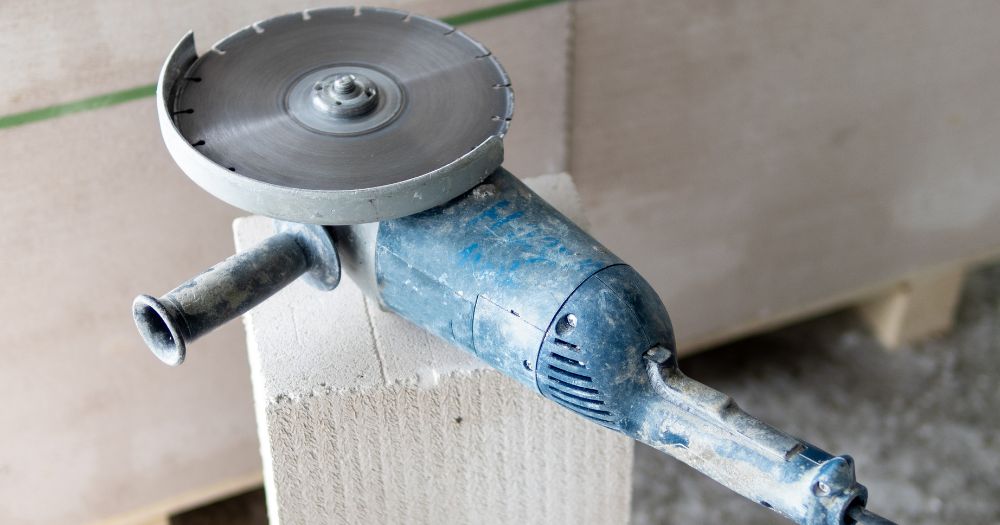
FAQs: How To Cut Concrete With Angle Grinder: A Comprehensive Guide
Navigating the world of concrete cutting with an angle grinder can be filled with questions, especially if you’re just starting out or looking to refine your techniques. Over the years, I’ve received numerous queries from fellow enthusiasts and professionals alike. Here, I’ve compiled some of the most frequently asked questions to provide clarity and guidance.
What type of blade is best for cutting concrete with an angle grinder?
A diamond saw blade is the most recommended for cutting concrete. Within diamond blades, there are variations like segmented, continuous, and turbo blades. For rough cuts, a segmented blade is ideal due to its gaps that allow for better airflow and heat dissipation. For smoother finishes, a continuous blade is preferred.
How can I ensure safety while using an angle grinder for concrete cutting?
Safety should always be a priority. Always wear protective gear, including safety glasses, gloves, and a face mask to protect against dust. Ensure the workspace is well-ventilated, especially if working indoors. Regularly inspect your angle grinder and blade for any signs of damage or wear and replace parts as necessary.
Is wet cutting better than dry cutting when using an angle grinder on concrete?
Both methods have their advantages. Wet cutting reduces dust and can provide more precise cuts, but it can be messier due to the water. Dry cutting is quicker and cleaner in terms of water usage but produces more dust. The choice often depends on the specific project requirements and the working environment.
I hope this FAQ section provides clarity on some of the common queries surrounding concrete cutting with an angle grinder. Remember, knowledge is power, and understanding your tools and techniques is the key to success!

Conclusion:
As I wrap up my insights on cutting concrete with an angle grinder, I find myself reflecting on the countless projects I’ve undertaken. Time and again, the angle grinder has proven to be an indispensable ally. Its efficiency in slicing through concrete, combined with its adaptability to various tasks, has made it a staple in my toolkit.
I’ve shared my journey and insights on cutting concrete with an angle grinder, and now I’d love to hear from you! Whether you’re a seasoned pro with your own tips and tricks or someone just starting out with questions, let’s keep this conversation going. Drop a comment below sharing your experiences, challenges, or any questions you might have. Let’s learn from each other and build a community where we can all grow and thrive. Looking forward to hearing your stories and insights!



